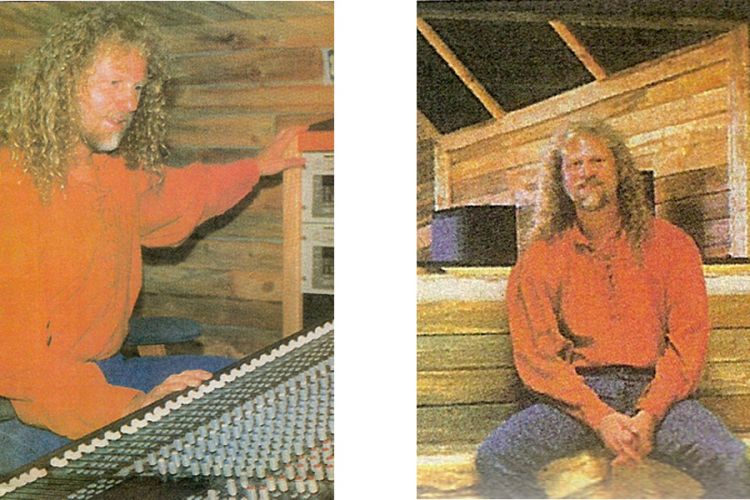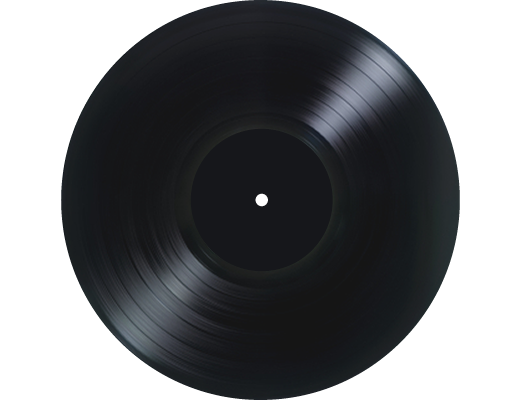Select an Article:
Labor of Love, DeGreve Making Music on His Own Terms
by Mary Mohatt TGIF Magazine on Jul 10, 1992
Every musician gets into dreams of having a place where you can go out and "'work out your ideas," says Michael DeGreve. That dream is corning true for him now with the completion of a professional recording studio at his home north of Cheyenne.
The studio's going to be a 32-track¬digital and analog both," says DeGreve. - I could have separate guitar voices, violins, drums on 32 channels of music to mix in."
Thousands of wires will link the recording room, the isolation booth and the control room, DeGreve adds, including 40 microphone line inputs. "It's not a home studio, it's for real- and I'm so excited," he says.
With a studio of his own, DeGreve's goal is to release an album of original material yearly. "Having my own studio here gives me freedom," he says. "I don't have to go to Los Angeles to record."
That's a real plus. Not only will DeGreve now be able to record whenever he wants, he will also be able to put more time into achieving just the right sound. In Los Angeles, he explains, It can cost an artist $200 an hour to record in a studio. That makes it impractical to try out very many different sounds, since the cost makes it imperative to finish recording quickly.
Another benefit of the new studio is its iocation on the Wyoming prairie. When DeGreve recorded his first album in Los Angeles, he says, he sometimes wanted to get out of the studio for a few minutes - but once outside he would be surrounded by smog and traffic and noise.
Here, when he steps out of the studio, . he has Wyoming's biue sky above him, the 3,000 trees he has planted around
him - and nothing else. To what extent the studio will be used by other acts is uncertain at the moment. "As long as ('m working six nights a week at the Hitch, if I'm engineering for other people all the time, when am I going to use it?" DeGreve says.
DeGreve knew when he bought the property 12 years ago that he wanted to turn the old block building into a studio someday. The problem was the cost.
New digital technologies have changed making sophisticated equipment much more accessible. "If I was going to do this five years ago it would have been $150,000," says DeGreve. "Not that It's cheap now, but it's more a working man's possiblllty."
That possibility was brought into focus when DeGreve returned from a 1992 tour of Russia. "I got back, and it was time to go to Los Angeles and do a new album, or think about maybe now would be the time to build my studio. It seemed do-able all of a sudden," he says.
"About a year ago we started having technical people from Los Angeles help with the design." he goes on. Don Gooch. his producer, was an invaluable consultant, coming out three or four times to observe the progress of the work and spending hours on the phone in conference with DeGreve.
Local friends helped put Gooch's advice into practice, "donating their time and effort and art and love," DeGreve says.
"There have been dozens of people who have come out with a hammer or a nail or a broom or a scraper."
He adds, "We learned as we went; none of us had ever built a studio," Tom Gilmore, who has been instrumental in completing the project, interjects, "We did a lot of building and tearing down. ('m working on the ninth revision of the blueprints right now."
The final stages may have been the hardest for DeGreve - seeing the studio nearly completed, but still having to walt for the wiring and equipment to be installed before he could start to record. "I can't walt to turn things on," he says.
"I'm ready to start rolUng tape and get going on my new album and start experimenting with sounds - see what kind of a monster we built here."
He plans to start working on a new studio album Immediately.
"We might bring in some of the heavyweights from the first album. but even if they do come out, it will be a mixture of these guys with some of the Cheyenne musicians. There are some great players around here," DeGreve says.
Once the studio is up and running, DeGreve is hopeful of signing with a label and seeing his albums distributed nationally. "The one that I'll start working on next month I hope will be tlie breakthrough album for me: he says.
A lot more has gone Into the dreams and plans and work on the studio than that ambition, however. DeGreve puts It simply. "It's a labor of love." he says.
When Michael DeGreve recorded his first album, Gypsy's Lament, he went all out. He rented a Los Angeles studio and enlisted the help of rock 'n' roll heavyweights like Graham Nash and Randy Meisner.
Then he brought It home to Cheyenne, where, he says with a smile, "One comment I would get was, 'Michael, I've been listening to you for 10 years, and it doesn't sound like what I'm used to.'"
His answer to that remark is his newly released album, Uve at the Hitch. "This album Is me and my guitar," DeGreve says.
Along with the new album, recorded on site at the Hitching Post Inn, DeGreve is releasing a videotape. "We decided, what the heck, If we're going to move in all that equipment, why not videotape the whole silly thing?" he explains.
Between them, the album and the videotape feature live versions of all the songs on Gyspy's Lament, plus five new songs. Both are dedicated to the people who have supported DeGreve through the 16 years he has entertained in Cheyenne.
The compact disc, cassette and videocassette will be available at Disc Jockey Records in Frontier Mall and Cheyenne Books and Music in downtown Cheyenne. They can also be obtained from DeGreve at the Hitching Post.
by Mary Mohatt TGIF Magazine on Jul 10, 1992
Every musician gets into dreams of having a place where you can go out and "'work out your ideas," says Michael DeGreve. That dream is corning true for him now with the completion of a professional recording studio at his home north of Cheyenne.
The studio's going to be a 32-track¬digital and analog both," says DeGreve. - I could have separate guitar voices, violins, drums on 32 channels of music to mix in."
Thousands of wires will link the recording room, the isolation booth and the control room, DeGreve adds, including 40 microphone line inputs. "It's not a home studio, it's for real- and I'm so excited," he says.
With a studio of his own, DeGreve's goal is to release an album of original material yearly. "Having my own studio here gives me freedom," he says. "I don't have to go to Los Angeles to record."
That's a real plus. Not only will DeGreve now be able to record whenever he wants, he will also be able to put more time into achieving just the right sound. In Los Angeles, he explains, It can cost an artist $200 an hour to record in a studio. That makes it impractical to try out very many different sounds, since the cost makes it imperative to finish recording quickly.
Another benefit of the new studio is its iocation on the Wyoming prairie. When DeGreve recorded his first album in Los Angeles, he says, he sometimes wanted to get out of the studio for a few minutes - but once outside he would be surrounded by smog and traffic and noise.
Here, when he steps out of the studio, . he has Wyoming's biue sky above him, the 3,000 trees he has planted around
him - and nothing else. To what extent the studio will be used by other acts is uncertain at the moment. "As long as ('m working six nights a week at the Hitch, if I'm engineering for other people all the time, when am I going to use it?" DeGreve says.
DeGreve knew when he bought the property 12 years ago that he wanted to turn the old block building into a studio someday. The problem was the cost.
New digital technologies have changed making sophisticated equipment much more accessible. "If I was going to do this five years ago it would have been $150,000," says DeGreve. "Not that It's cheap now, but it's more a working man's possiblllty."
That possibility was brought into focus when DeGreve returned from a 1992 tour of Russia. "I got back, and it was time to go to Los Angeles and do a new album, or think about maybe now would be the time to build my studio. It seemed do-able all of a sudden," he says.
"About a year ago we started having technical people from Los Angeles help with the design." he goes on. Don Gooch. his producer, was an invaluable consultant, coming out three or four times to observe the progress of the work and spending hours on the phone in conference with DeGreve.
Local friends helped put Gooch's advice into practice, "donating their time and effort and art and love," DeGreve says.
"There have been dozens of people who have come out with a hammer or a nail or a broom or a scraper."
He adds, "We learned as we went; none of us had ever built a studio," Tom Gilmore, who has been instrumental in completing the project, interjects, "We did a lot of building and tearing down. ('m working on the ninth revision of the blueprints right now."
The final stages may have been the hardest for DeGreve - seeing the studio nearly completed, but still having to walt for the wiring and equipment to be installed before he could start to record. "I can't walt to turn things on," he says.
"I'm ready to start rolUng tape and get going on my new album and start experimenting with sounds - see what kind of a monster we built here."
He plans to start working on a new studio album Immediately.
"We might bring in some of the heavyweights from the first album. but even if they do come out, it will be a mixture of these guys with some of the Cheyenne musicians. There are some great players around here," DeGreve says.
Once the studio is up and running, DeGreve is hopeful of signing with a label and seeing his albums distributed nationally. "The one that I'll start working on next month I hope will be tlie breakthrough album for me: he says.
A lot more has gone Into the dreams and plans and work on the studio than that ambition, however. DeGreve puts It simply. "It's a labor of love." he says.
When Michael DeGreve recorded his first album, Gypsy's Lament, he went all out. He rented a Los Angeles studio and enlisted the help of rock 'n' roll heavyweights like Graham Nash and Randy Meisner.
Then he brought It home to Cheyenne, where, he says with a smile, "One comment I would get was, 'Michael, I've been listening to you for 10 years, and it doesn't sound like what I'm used to.'"
His answer to that remark is his newly released album, Uve at the Hitch. "This album Is me and my guitar," DeGreve says.
Along with the new album, recorded on site at the Hitching Post Inn, DeGreve is releasing a videotape. "We decided, what the heck, If we're going to move in all that equipment, why not videotape the whole silly thing?" he explains.
Between them, the album and the videotape feature live versions of all the songs on Gyspy's Lament, plus five new songs. Both are dedicated to the people who have supported DeGreve through the 16 years he has entertained in Cheyenne.
The compact disc, cassette and videocassette will be available at Disc Jockey Records in Frontier Mall and Cheyenne Books and Music in downtown Cheyenne. They can also be obtained from DeGreve at the Hitching Post.

Studio Labor of Love



























